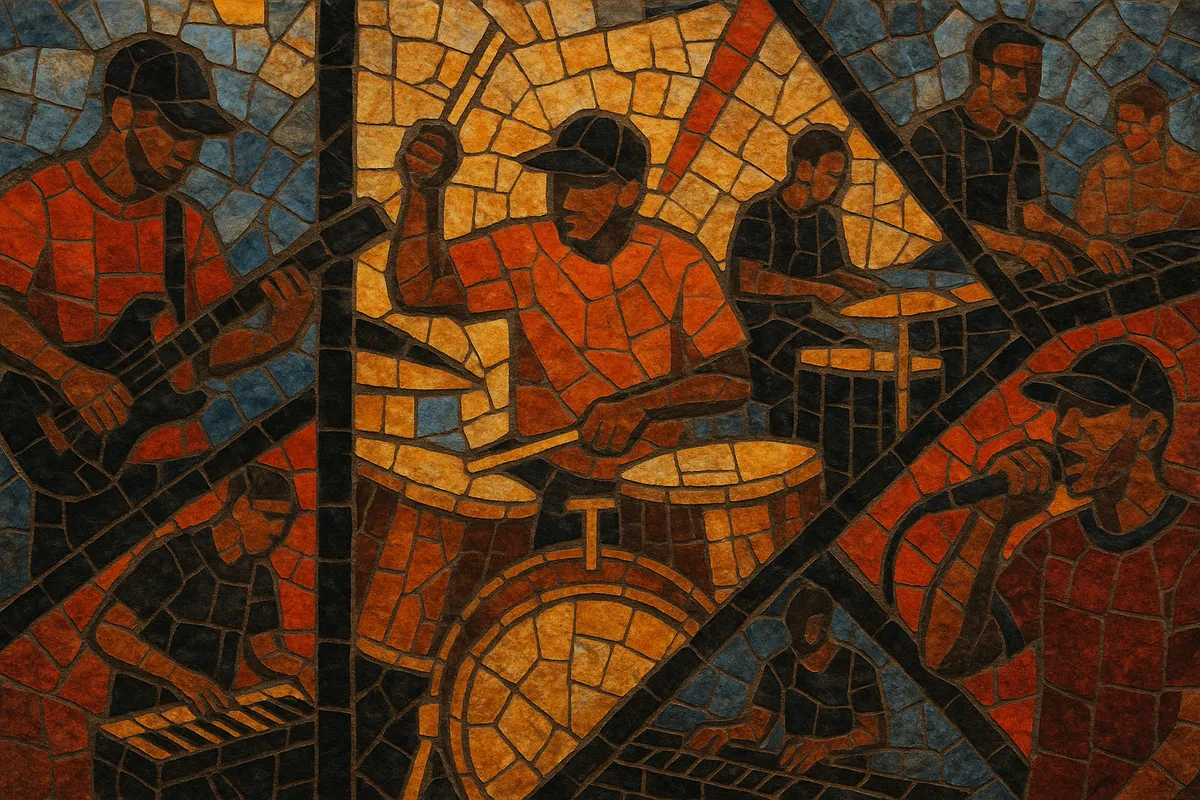
Bounce beat is a late-2000s offshoot of Washington, D.C.’s go-go that intensifies the pocket with heavy tom-led cadences, booming 808 subs, and chant-driven call-and-response. It keeps go-go’s live band core—drum kit, congas, bass, keys, and multiple vocalists—but shifts the rhythmic center toward rolling floor-tom patterns and sudden drop-outs that create a visceral, athletic “bounce.”
The style favors extended grooves over complex harmony, street-level hooks over sung choruses, and crowd participation as a primary musical element. It is club- and party-focused, often performed at teen nights and community events across the DMV (D.C., Maryland, Virginia). Not to be confused with New Orleans “bounce,” D.C. bounce beat is a distinct evolution within the go-go tradition.
Bounce beat emerged in Washington, D.C. as a younger generation’s update to classic go-go. Bands began emphasizing floor tom rolls, punchy kick patterns, and booming 808s while retaining congas, call-and-response, and vamp-based song forms inherited from funk-rooted go-go. This rebalancing created a raw, kinetic club feel tailored to all-ages and teen scenes.
As MySpace, YouTube, and local message boards amplified regional music, bounce beat bands like TCB and peers circulated rehearsal footage, live clips, and “crank” moments that codified the sound. The DMV’s rec centers, teen nights, and suburban venues in Prince George’s County and beyond became incubators for the style, sustaining a tight feedback loop between performers and audiences.
While still recognizably go-go—live, percussive, participatory—bounce beat differentiated itself through more aggressive drum cadences, halftime-feeling breakdowns, and MC-driven hype. The music often reworks rap hits and R&B fragments into long grooves, with crowd chants and neighborhood shout-outs functioning as key musical motifs.
The style persisted through venue shifts, law-enforcement pressure on late-night events, and changing social media platforms. It remains a vital youth-facing expression of D.C. culture, influencing regional rap aesthetics, local dance, and the performance practices of newer go-go acts who toggle between traditional and bounce beat pockets.

